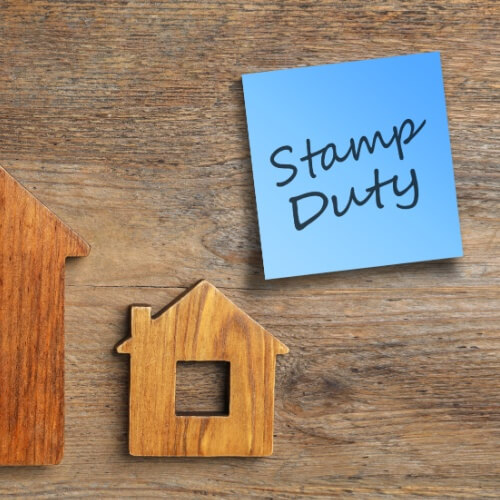 Written by James Hurwood
Written by James Hurwood
Edited by Eliza Buglar
Expert reviewed by Stephen Zeller
Last updated 20 May 2025
Don't quite understand stamp duty? You might want to watch this explainer from Selling Houses Australia host, Andrew Winter.
![]()
Stamp duty will likely be one of your biggest upfront homebuying costs, if not the biggest of them all. This makes it important to understand stamp duty and how much you’re likely to pay on your QLD property purchase. To help you with this, our General Manager of Money, Stephen Zeller, has some tips:
You could pay less in stamp duty on your QLD property purchase if you plan on using it as a primary place of residence rather than as an investment property. First home buyers may also be eligible for a stamp duty concession when buying their first home or land upon which they plan to build their first home.
Stamp duty can often be overlooked when totalling up homebuying costs, so make sure to do your research and figure out how much stamp duty you’ll likely have to pay when deciding how much you’ll need to save up.
Our expert team of mortgage brokers are ready to help you with any questions you have on how stamp duty in QLD is calculated. You can reach out to them via phone call or email to discuss your scenario and what stamp duty costs and other government fees may be applicable.
The purchase price of your home (also known as the dutiable value, as opposed to the market value) will affect what stamp duty rate is applied. The stamp duty rates in Queensland as of March 2025 are listed below.1
| Property price | Stamp duty rate |
| $0 – $5,000 | No stamp duty |
| $5,001 – $75,000 | $1.50 for each whole or part $100 over $5,000 |
| $75,001 – $540,000 | $1,050 plus $3.50 for each whole or part $100 over $75,000 |
| $540,001 – $1,000,000 | $17,325 plus $4.50 for each whole or part $100 over $540,000 |
| $1,000,001+ | $38,025 plus $5.75 for each whole or part $100 over $1,000,000 |
For example, you might buy a house for $550,150. That means your payable stamp duty would be $17,325, plus $4.50 for each $100 over $540,000. To figure out how much stamp duty you’d pay all up, we need to do some calculations.
Step 1. Figure out how many blocks of $100 there are between $540,000 and the purchase price of $550,150.
There’s a $10,150 difference between the two figures; $100 goes into that 101 times, and the additional $50 is treated as a whole $100 as well. This means there are 102 blocks of $100 we need to use to calculate stamp duty.
Step 2. Multiply 102 by 4.50 to calculate the second part of your stamp duty
102 x $4.50 = $459
Step 3. Add the two components of the stamp duty rate together
$459 + $17,325 = $17,784
This means that on top of the purchase price of $550,150, you’d pay $17,784 in stamp duty if you’re not eligible for any stamp duty concessions or exemptions in QLD.
Stamp duty in QLD is calculated based on the sale price of the property, and while other factors may influence how much stamp duty you end up paying, you won’t pay more or less simply because of the type of property you’re buying (e.g. an apartment vs. a townhouse).
Of course, some types of houses may be more valuable than others and therefore sell for a higher price and incur a higher rate of duty.
It’s also worth noting that you won’t pay a different set of stamp duty rates based on whether you’re buying a new home or an established home in QLD.
Stamp duty is typically due within 30 days of signing documents but before the sale is settled. The Queensland Government recommends having your documents stamped well before settlement if you’re buying a property with the help of a home loan.²
Lenders will generally have you sign these documents early on, so you can potentially include stamp duty in the amount you borrow for a mortgage if desired.

There are three types of stamp duty concessions in Queensland that can either reduce the amount you must pay in duty or reduce it to zero entirely (depending on the purchase value of the property). These are:
The concessions for stamp duty often require you to live in the property for 12 months after purchase and not sell or lease all or part of the property within that time. If you move out or put the home on the market, for example, you might lose the concession and be required to pay additional stamp duty.
While certain states have stamp duty exemptions or concessions for pensioners, there are no specific stamp duty concessions for pensioners or seniors in QLD. However, you may still be able to apply for a concession listed above if you meet the criteria, as none of them have age restrictions.
You may want to consider speaking to one of our expert mortgage brokers, as they may be able to advise on lenders and products which could be better-suited to the needs of older Australians.
Yes, property investors pay the same rates of stamp duty on their property purchase as prospective owner-occupiers do. However, it’s worth noting that the various stamp duty concessions and exemptions on offer in QLD aren’t available to those buying investment properties.
So, depending on your buying circumstances, you may pay more in stamp duty for a property in QLD if you plan on renting it out rather than living in it.
Foreign buyers (whether they’re a resident, company or trust) that purchase residential land in QLD must pay however much regular stamp duty is payable on the transaction, plus an 8% additional foreign acquirer duty (AFAD).⁶
If you buy a home in Queensland from another state (like NSW), you’ll still have to pay the applicable QLD stamp duty. You will, however, also be able to claim the QLD concessions so long as you meet the relevant eligibility criteria.
If you’ve owned another property in Australia that was your primary residence, you won’t be eligible for the first home concession or first home vacant land concession. You may still be eligible to claim QLD’s home concession if you are moving into the property within 12 months and it will be your principal place of residence.
The stamp duty rates charged on the sale of commercial properties are the same as the rates charged on the sale of residential properties in QLD.1
![]()
Stephen has more than 30 years of experience in the financial services industry and holds a Certificate IV in Finance and Mortgage Broking. He’s also a member of both the Australian and New Zealand Institute of Insurance and Finance (ANZIIF) and the Mortgage and Finance Association of Australia (MFAA).
Stephen leads our team of Home Loan Specialists, and reviews and contributes to Compare the Market’s banking-related content to ensure it’s as helpful and empowering as possible for our readers.
1 Queensland Revenue Office. Transfer duty rates. 2025.
2 Queensland Revenue Office. When transfer duty applies. 2025.
3 Queensland Revenue Office. Home concession. 2025.
4 Queensland Revenue Office. First home concession. 2025.
5 Queensland Revenue Office. First home vacant land concession. 2025.
6 Queensland Revenue Office. Additional foreign acquirer duty (AFAD). 2025.